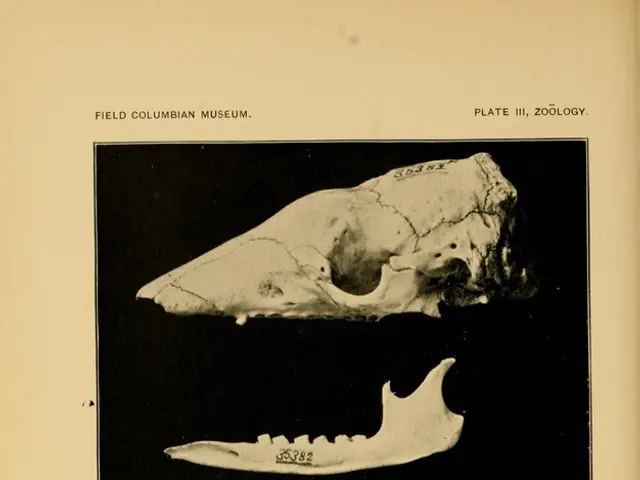Genetic Basis of Felines, Particularly Orange Cats: What Makes Them One-of-a-Kind
Feline Frenzy Unveiled:
Hey there, cat lovers! It looks like our feline friends with the striking orange coats have stirred up quite a buzz lately. From news headlines labeling them as "freaks of nature" to concerned chatter about their health, it's high time we clear up the confusion.
It turns out that the explanation behind this ginger glow is more fascinating than you might think, and it all comes down to genetics. Researchers from two different teams have independently discovered the secret behind the orange fur of cats – and trust us, it's not as simple as you'd imagine.
Previously, it was known that the orange fur of cats was an X chromosome-linked mutation, but researchers were stumped as to why the black-brownish pigmentation (eumelanin) was being suppressed in favor of the orange coloration (pheomelanin). After years of research, they've finally managed to pinpoint the exact 'O gene' responsible for the orange coat – a mutation related to the X-linked ARHGAP36 gene. This mutation alters the expression of several melanogenesis genes, ultimately resulting in the suppression of eumelanin and the production of more pheomelanin.
But why the orange hue, you ask? Well, it's all down to the balance of melanin pigments in the cat's fur. To have an orange, or "ginger," coat, there must be a severe decrease in eumelanin production, with pheomelanin being the primary pigment present.
Considering the intricacies of this mutation, it's no wonder that orange cats have caught people's attention. But before you start worrying about those lively ginger balls of fluff, rest assured that this genetic alteration doesn't lead to any cognitive impairment – much like in humans – despite the slander often hurled at our feline friends with orange coats.
Interestingly, the tortoiseshell and calico patterns are most commonly associated with this orange mutation. This striking pattern arises due to the random inactivation of either of the two X chromosomes in female cats, with just one of the X chromosomes carrying the mutation. Male cats can also display calico or tortoiseshell patterns, but this is quite rare, occurring less than one percent of the time, and is usually the result of intersex conditions such as Klinefelter syndrome (XXY) or chimerism (merged cell lines from two distinct embryos).
So, there you have it! The captivating story behind the orange fur of our favorite feline companions. Now go ahead and give those ginger kitties a well-deserved snuggle – they're truly unique creatures with an incredible history!
- Science continues to penetrate the mysteries of health and wellness, with breakthroughs happening regularly.
- Fitness and exercise play an essential role in maintaining mental health, reinforcing a positive lifestyle.
- Adequate understanding of sexual health is crucial for building healthy relationships and responsible parenting.
- Climate change demands our immediate attention, with environmental science key to sustainable changes in lifestyle and fashion.
- Therapies and treatments for mental health, such as CBD, holistic approaches, and behavioral therapy, are increasingly prioritized.
- Research on men's health, like prostate cancer and heart disease, has garnered significant attention in recent years.
- Skin-care products and treatments are constantly evolving, responding to new innovations in dermatology and cosmetic science.
- Nutrition and dietary choices play a vital role in taking care of oneself, preventing diseases, and promoting longevity.
- Women's health encompasses numerous aspects, including reproductive health, menopause, and breast cancer awareness.
- Mental and emotional well-being, now more recognized as critical elements in overall health, requires open discussions on issues like stress management and mindfulness.
- Parenting practices have evolved significantly over the years, with a shift towards holistic and supportive approaches.
- The environmental impact of technology, from e-waste to solar energy, is a growing concern in environmental science and sustainable living.
- Space and astronomy fascinate us, with advancements in technology enabling breakthroughs in our understanding of the universe.
- Lifestyle choices can influence our carbon footprint and the health of the environment, making us responsible custodians of the earth.
- The intersection of fashion, beauty, and sustainability is increasingly needed to ensure fashion stays stylish without compromising the planet.
- Food and drink trends constantly change, reflecting shifts in our understanding of nutrition and diverse cultural influences.
- Relationships demand nurturing, requiring open communication, empathy, and understanding to thrive.
- Pets, travel, sports, and hobbies bring joy and enrich our lives, making them valuable aspects of our overall well-being.








